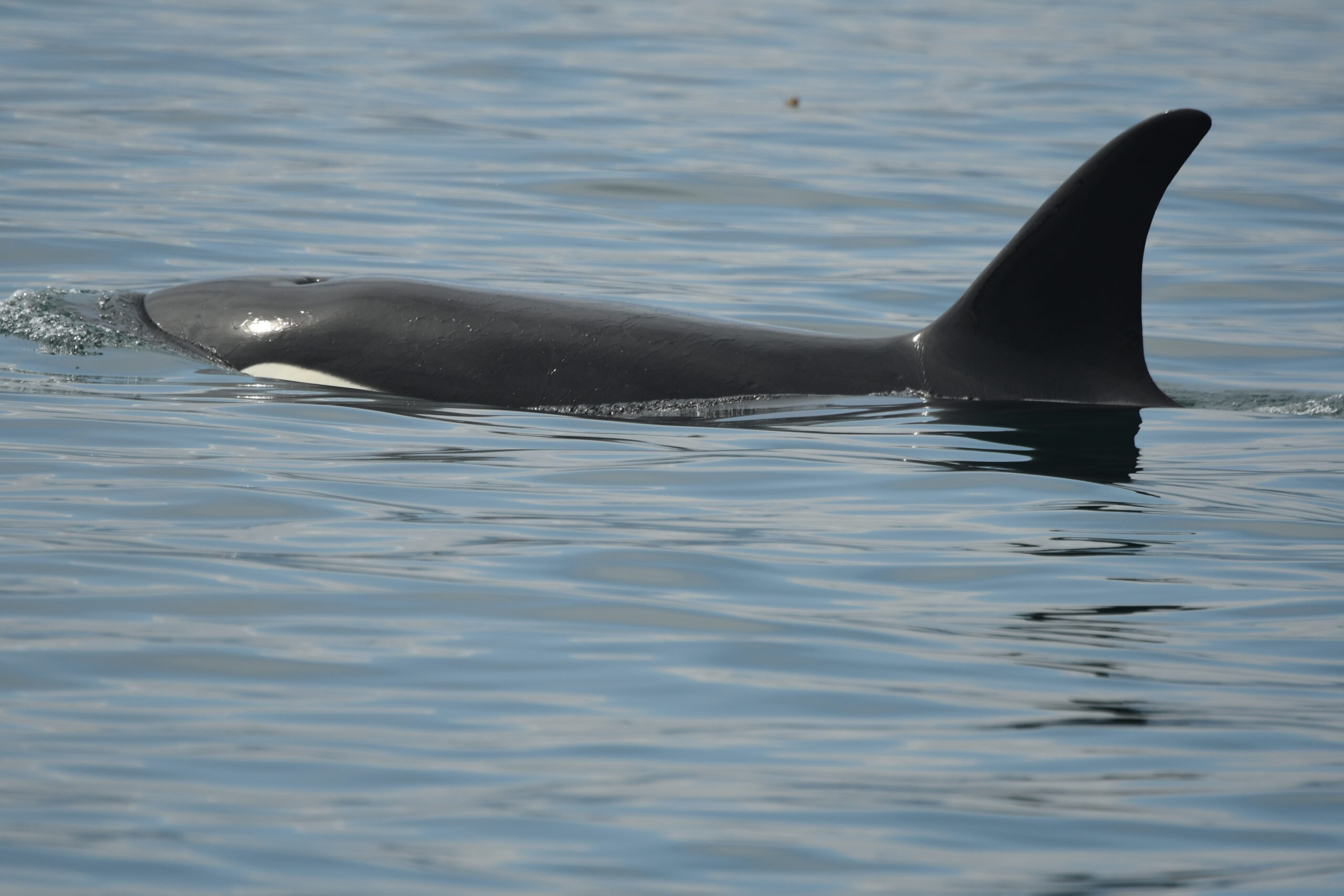Meet the Bigg’s: Featured Families
Bigg’s (west coast transient) killer whales are some of the most frequently seen cetaceans (whales, dolphins, and porpoises) in the Salish Sea. As with other orcas, Bigg’s can be identified down to the individual and because of this we almost always know which families we are viewing and where they travel within the Salish Sea. However, it’s likely that you won’t see the same individuals two days in a row. Bigg’s orcas can travel up to 100 miles in a 24-hour period, so we are consistently seeing different families day-to-day. There are a few families that prefer the Salish Sea more than others. We would like to introduce you to these families and share some of our favorite experiences from our times shared with them.
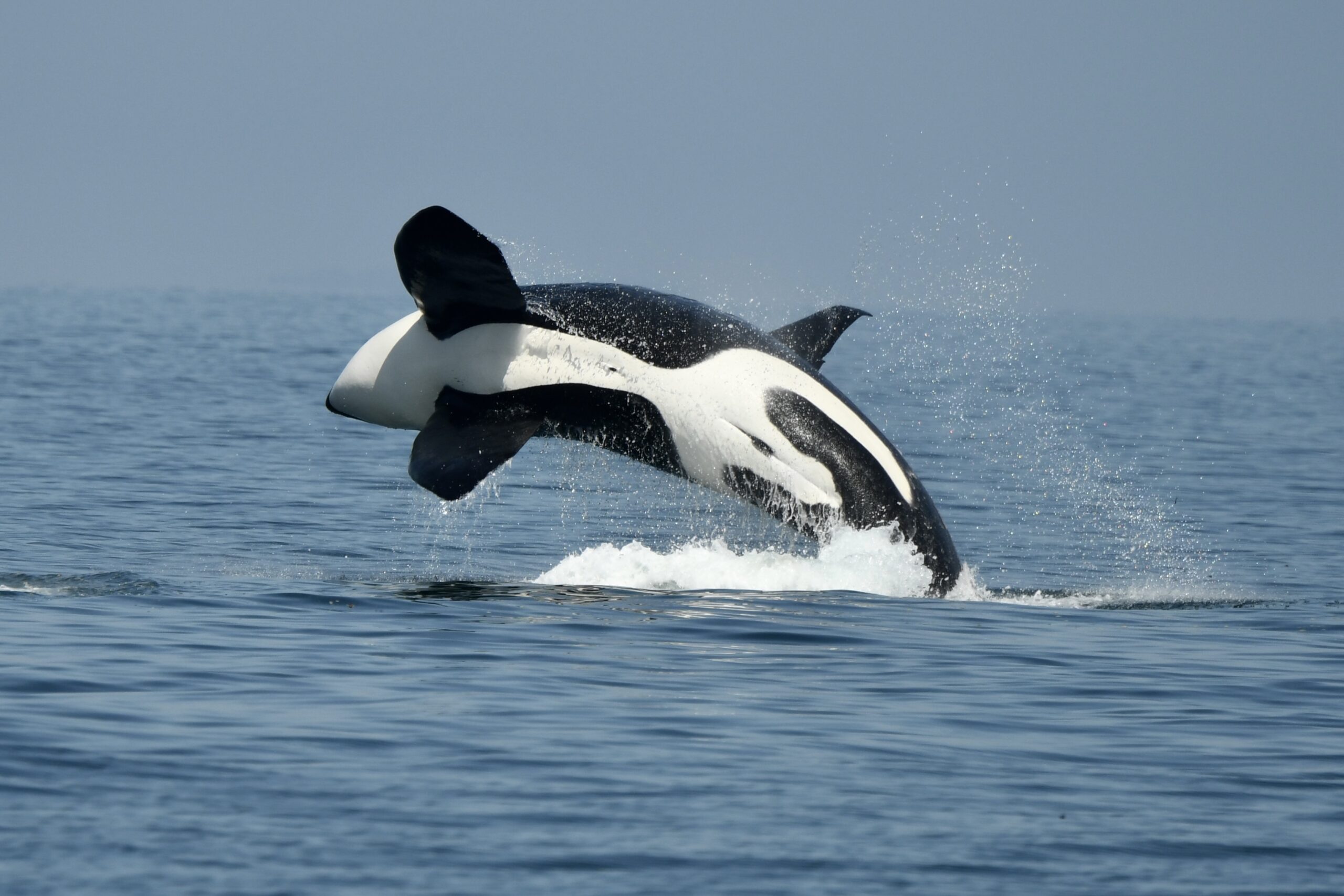
Introducing the T46’s!
The T46’s are currently made up of four whales. Though T46 “Wake” has since passed away, four of her offspring still travel together and they remain the T46 matriline by name. T122 “Centeki,” the presumed daughter of T46 “Wake” has seemingly swam into the role as matriarch of the T46’s since her mom passed away in 2023. She is an interesting case. At about 41 years old, T122 “Centeki” has had no known calves of her own. However, that doesn’t make her less of a guardian of her family. She now leads the family comprised of her three younger brothers, T46D “Strider,” T46E “Thor,” and T46F “Loki.”
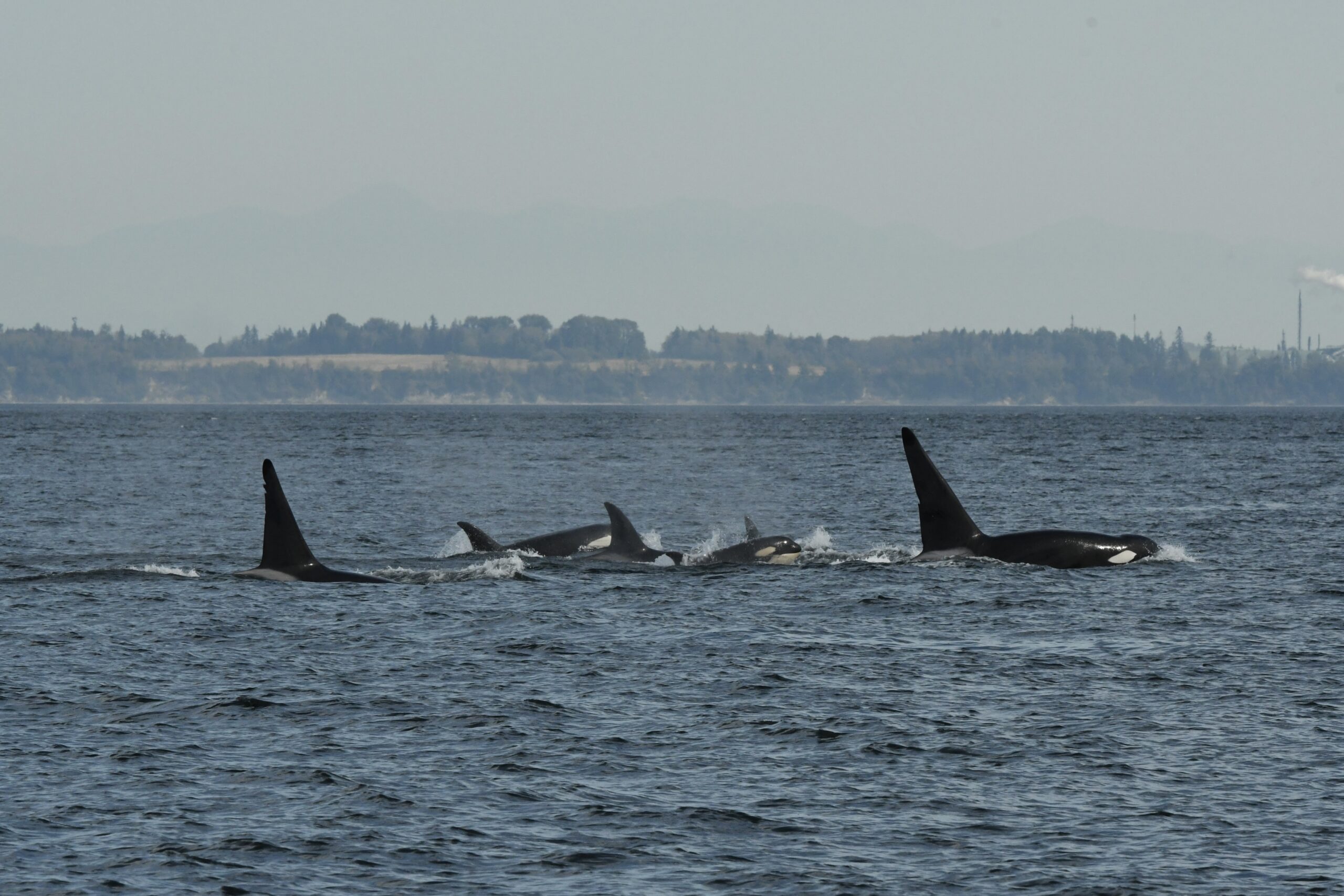
The Story of T46 “Wake”
T46 “Wake” is a legend of a whale and one that inspires the hearts of many when they hear her story. Back in 1976, T46 “Wake” became one of the last orcas in Washington State to be captured. In Budd Inlet (near Olympia, Washington) six whales, including T46 “Wake” were captured and held behind nets with the intent of selling them to marine aquariums. However, public outcry over the capture event and the fight that activists put up eventually led to the end of orca capture in Washington State. The “Budd Inlet Six” as the captured whales are now known, were eventually released after weeks of long court sessions and deliberations.
T46 “Wake” seemingly disappeared not long thereafter and wasn’t seen for 13 years! When she finally made her return to the Salish Sea, she had two young whales swimming with her, T122 “Centeki” and T123 “Sidney.” Because these two were not young enough to definitively say they are the offspring of T46 “Wake,” they were given separate alpha-numeric designations (T122 & T123). However, they traveled so consistently with T46 “Wake” that they are presumed to be her daughters. However, T46 “Wake” did have five confirmed offspring during her observed years in the Salish Sea, all of which are still thriving today. T46B “Raksha” has six living offspring of her own and several grand-calves and T46C “Carmanah” has four living offspring. T46 “Wake’s” youngest kids, her boys (T46D “Strider,” T46E “Thor,” and T46F “Loki”) are all doing well and becoming some of the notably large males in the population!
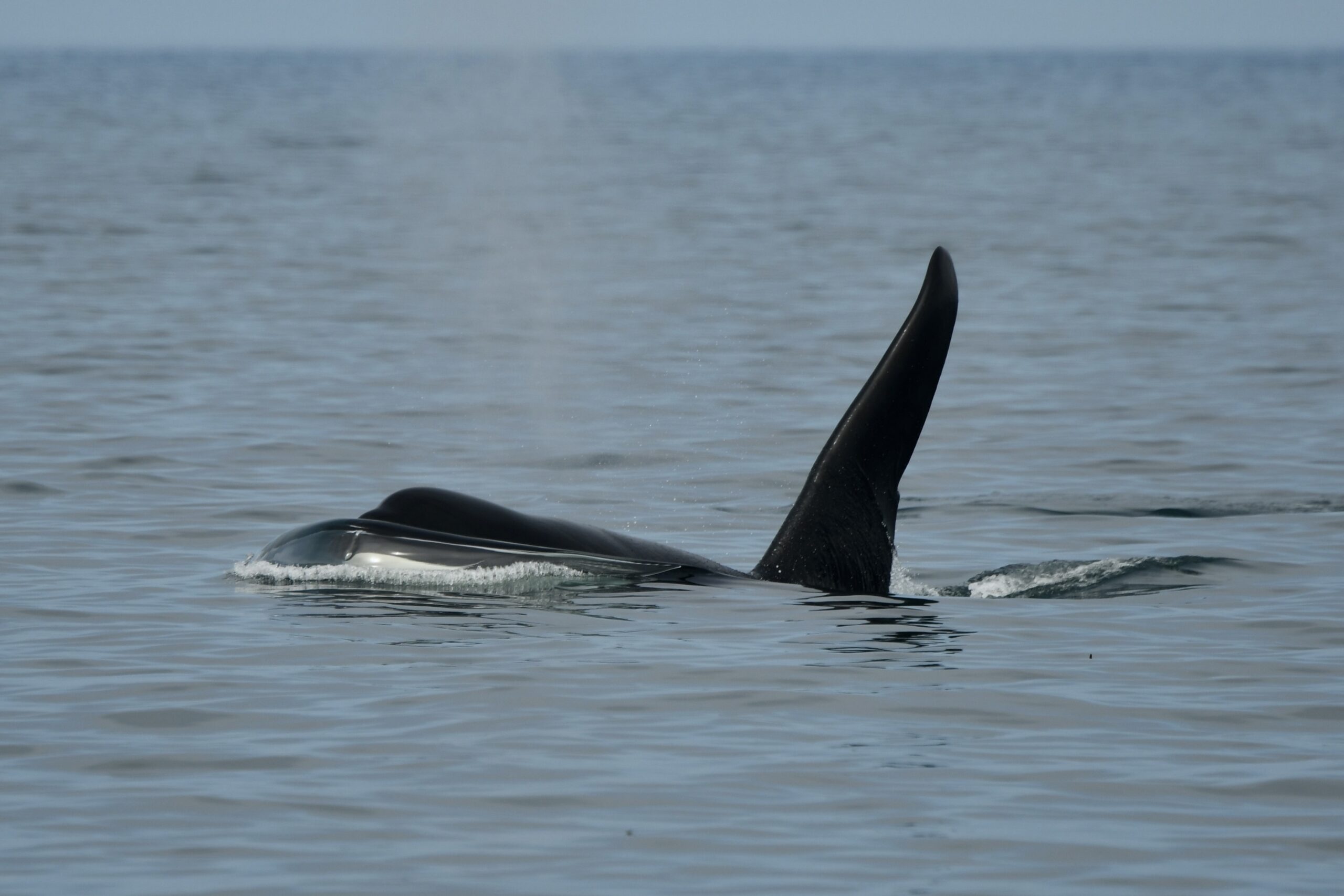
Our Most Memorable Encounter with the T46’s
On the morning of April 27th, we set out southbound out of the marina toward the Washington peninsula, following up on a report of a group of whales in Discovery Bay. Having been identified by other members of the Pacific Whale Watch Association (PWWA) prior to our joining them, we knew we were going to meet up with the T46 and T46B families. Arriving on scene, the whales were split into three groups with T46D “Strider” and T46B4 “Quiver” hanging out, T46E “Thor” and T46B3 “Sedna” swimming a little further from them, while the rest of the family were gathered closer together socializing. We weren’t on scene long before it became evident that they had taken down a harbor seal and then the magic began. Members of the family, including T122 “Centeki,” T46B2 “Akela,” and T46E “Thor” started to breach and seemingly didn’t want to stop! Between breaches were all kinds of other surface displays like spyhops, tail slaps, pec slaps, and dorsal slaps. This was all incredibly exciting and then it dawned on all of the whale-watchers on scene, T46 “Wake” was not among her family. With the way that Bigg’s killer whales’ social structures revolve around their mothers, this was a gut-wrenching realization. Years prior, the whole T46 extended family had met up in this very same location and displayed similar behavior. At that time, it was discovered that one of the members of the T46B’s was no longer with them. As the weight of the scene I was witnessing fell upon me, I was moved to tears. Though I try hard as a biologist to not project human emotion onto orcas, some days that is more difficult than others. I truly felt that I was observing a celebration of life for their matriarch. As T46 “Wake’s” family breached, hunted, and played I couldn’t help but be overcome with emotion – her family was free because she fought for freedom all those years ago.
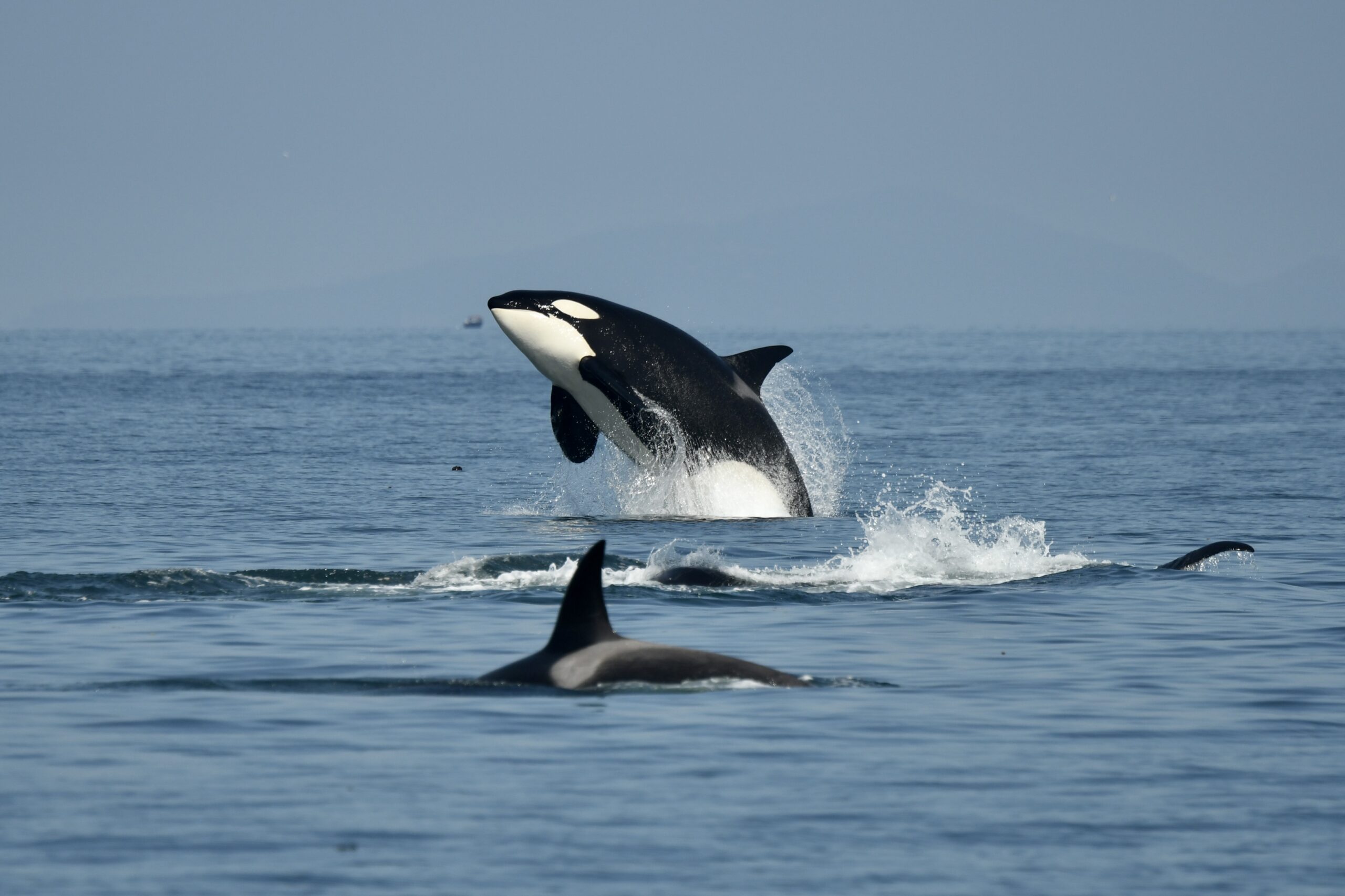
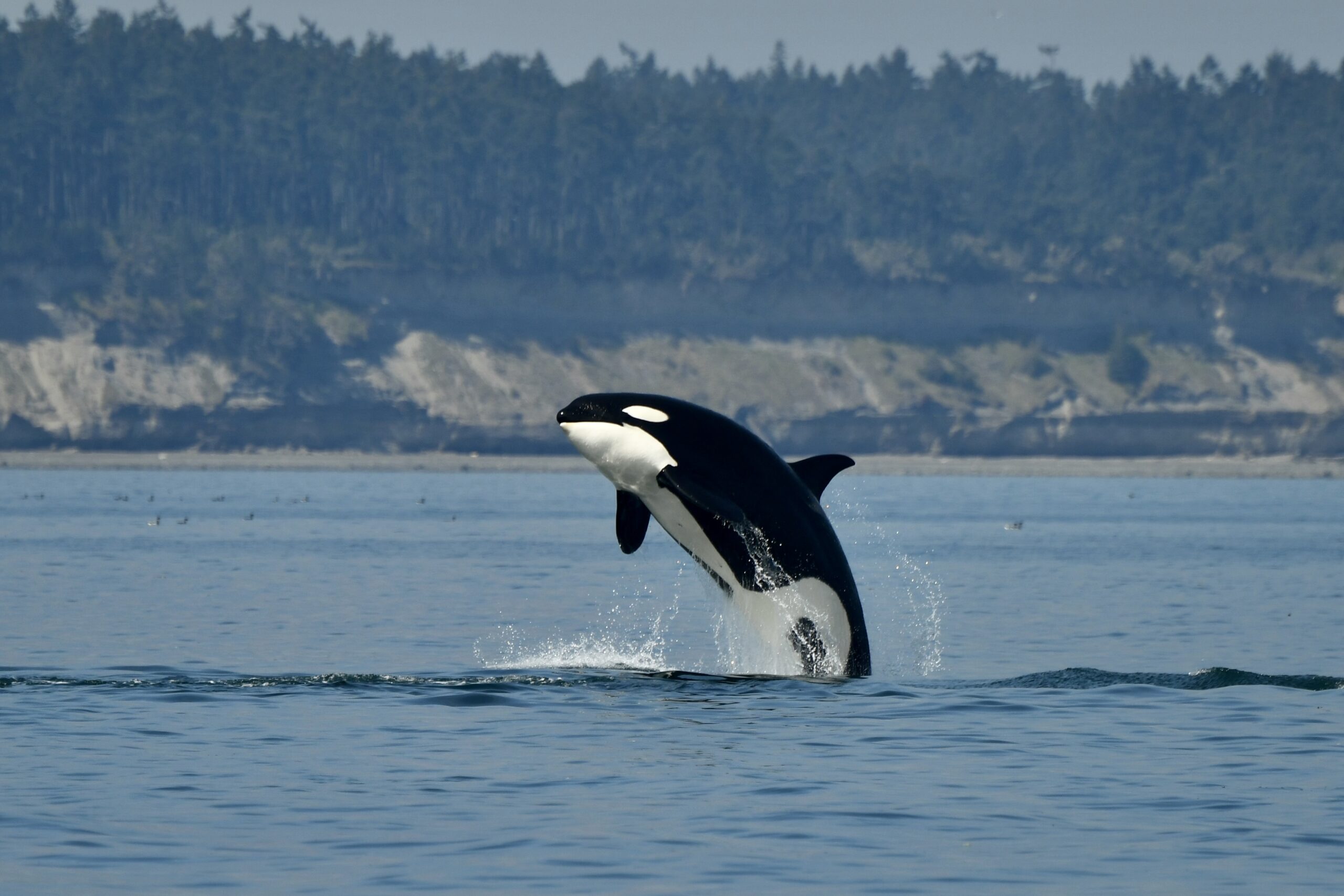
A Legacy Left
Though it is sad that T46 “Wake” has passed, her legacy lives on in her thriving matriline. Most orcas in captivity die much younger than they would in the wild and females struggle to have successful births under the stress of captivity. This was the fate awaiting T46 “Wake” back in Budd Inlet in March of 1976. Thanks to the tireless work of conservation and orca activists, this fate never came to fruition. T46 “Wake” was saved from a life stuck in a concrete tank. She instead went on to be one of the most successful orca mothers in the Bigg’s killer whale population. She has 7 living offspring, 13 living grand-offspring, and 4 great-grand-offspring, all of whom carry the strength, resilience, and spirit of their matriarch who fought for life and fought for freedom. We remember T46 “Wake” and we tell her story whenever we are with members of her family. She is a true legend of the Salish Sea.
